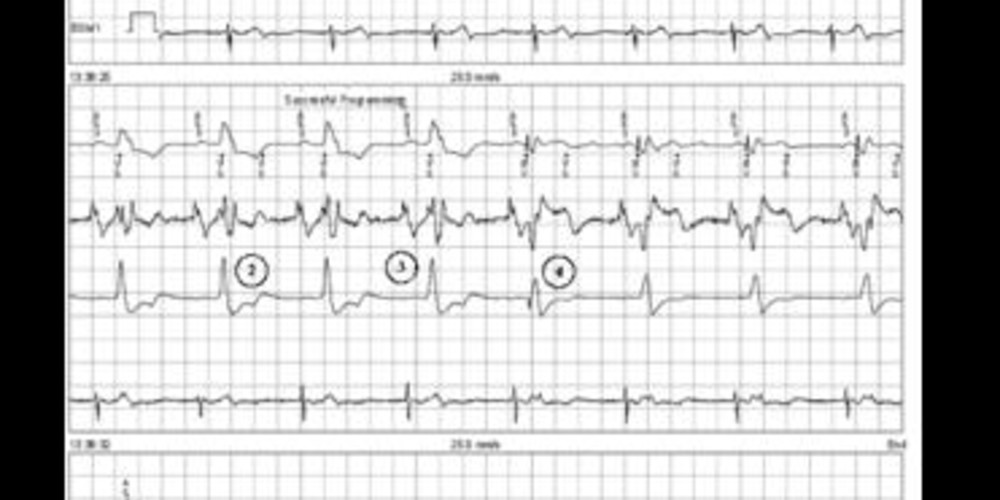T-wave oversensing
Tracing
Manufacturer Medtronic
Device CRT
Field Standard parameters
N° 20
Patient
53-year-old woman implanted with a triple-chamber defibrillator Protecta XT CRT-D for ischemic cardiomyopathy with left bundle branch block; routine follow-up.

Graph and trace
Temporary programming ODO;
- atrial sensing and biventricular pacing (AS-BV);
- oversensing of the T-wave on a spontaneous ventricular event;
- biventricular pacing is turned ON;
- oversensing of the T-wave during biventricular pacing;
- persistent T-wave oversensing;
- programming change; decrease in ventricular sensing;
- oversensing resumed.
Other articles that may be of interest to you







In this patient, oversensing of the T-wave was present after a spontaneous ventricular event but also after a paced ventricular event. It was not responsible for a significant drop in the percentage of biventricular pacing. The device recorded a large number of premature ventricular contractions corresponding to the T-wave oversensing episodes.
Oversensing of the T-wave can in some cases promote the absence of biventricular pacing. The T-wave is considered as a ventricular premature contraction, which causes a prolongation of the PVARP if the “response to a PVC” algorithm is turned ON. The next sinus P-wave falls into the PVARP, and therefore does not trigger a new AV delay, and the phenomenon perpetuates as shown in the previous case.